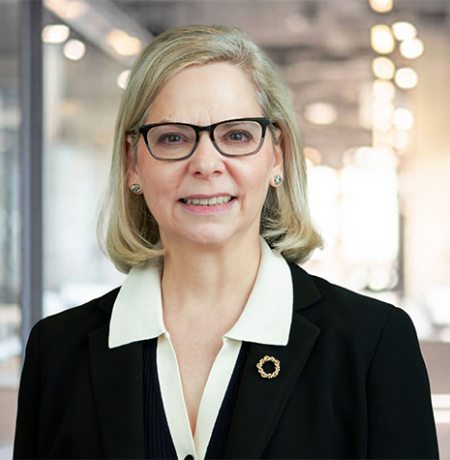
“Hope doesn’t pay debt service” is a message I heard repeatedly from many hospital executives during my years as a ratings analyst. Any astute finance executive or finance committee member will tell you that generating cash flow through efficient operations funds the mission. But the opposite is rarely true: mission doesn’t typically pay debt service.
Although most rating meetings begin with the hospital’s mission statement, only on a limited basis do community benefit programs directly translate into cash flow. Rather, community benefit subsidizes unreimbursed costs by government and commercial payers, and provides healthcare services to the uninsured and community at large. In recent years given the pandemic, many hospitals reported a higher level of community benefit as services went beyond traditional healthcare to include subsidized housing for employees, free food banks for the community and childcare and educational services.
The pandemic also reminded us of a painful truth about the U.S. healthcare system: the lack of equitable access to healthcare remains a pervasive and persistent challenge in many low-income communities. Social determinants of health have a direct bearing on hospital financial performance.
Hospitals are now grappling with the financial aftermath of the latest omicron surge, including exorbitant labor costs, a fragile workforce pipeline, and volume that remains below pre-pandemic levels. Patients who delayed medical care and screenings now present with more intense healthcare needs and require more expensive healthcare resources. Management is leaving no stone unturned as they double down on operations to regain the steadier financial performance enjoyed by many leading up to the pandemic.
Concurrently, many hospitals are taking a fresh look at their mission-oriented strategies. For years, hospitals have provided grants to various causes in their communities to augment efforts around mission. Now, many forward-thinking organizations are considering impact investing. Impact investing takes community benefit one step further by looking for a small financial return on that contribution, essentially to cover costs and inflation. The return ensures that the lending program can continue as the investment allocation is refilled, unlike a one-time grant or depletion of allocated funds. A mission with a margin, so to speak.
One example of such a program is the Anchor Mission project, launched in 2018 by UMass Memorial Health Care (UMMHC) in Worcester, Massachusetts. UMMHC is the largest health care system in central Massachusetts and affiliated with University of Massachusetts Medical School, the only public medical school in the state. Like many health systems, UMMHC maintains an extensive community benefit program, particularly given the wide range of income levels and life expectancy in its region. Through its Anchor Mission, UMMHC would utilize impact investing to provide low-interest loans to important causes and gain a small margin that covers the cost of inflation.
UMMHC identified three key areas that would have the greatest impact: local hiring, local sourcing, and place-based community investments. For the place-based community investments, UMMHC pledged 1% ($4 million) of its unrestricted cash portfolio and sought lending expertise from local finance institutions. Criteria were established to identify potential recipient organizations and metrics to monitor progress. One important criterion was the extent to which investments would address the highest needs in the community, as identified in the organization’s community health needs assessment.
To date, nine projects have been funded, five of which fund loans for low-income and affordable housing. Housing plays a central role in the health of a community and an individual. The investments provide low-interest loans to non-profit organizations that will develop affordable properties for individuals, some of which are directed to first-time homeowners. Two of the five recipients are the local chapter of Habitat for Humanity and the Worcester Common Ground Community Development Corporation. Both organizations received loans of $400,000. UMMHC’s board also gained comfort as UMMHC will receive security in the form of mortgages or liens on the developed properties if these efforts do not work.
The small financial return should be realized over the near term as many of the loans are short-term in tenor. Financial returns will seek to cover inflation and then be recycled into new projects with a similar financial goal. While not showing as large a return that, say, an investment in a stock portfolio would garner, impact investing will translate into other types of social return that benefits the community. Moreover, the system is likely to experience long-term financial returns such as lower emergency room visits for non-emergent care, shorter lengths of stay, and more appropriate use of bed capacity for higher intensity cases.
Impact investing may also create greater partnership opportunities. In July 2021, 119-bed Harrington Hospital located in Southbridge, MA joined the UMMHC system. As part of the merger, UMMHC agreed to invest another $4 million in Anchor Mission projects in Harrington’s local service area to address some of the community’s needs such as unemployment and homelessness. Although most mergers commit to capital spending or the assumption of liabilities, UMMHC’s impact commitment may have contributed to the merger’s speedy approval by state regulators.
We expect that impact investing will take on greater relevance as external stakeholders such as consumer watchdog groups and regulators take a closer look at ESG-related strategies. And with any strategy that requires the use of finite liquidity, investors and rating analysts will seek information on size of the allocation relative to total cash and investments, pace and diversity of the investments, structure of the loans, selection criteria and reporting guidelines to measure the near-term and long-term return.
Beyond the financial return, impact investing builds goodwill. Some of UMMHC’s allocation will build community centers in immigrant neighborhoods to promote an inclusive culture. A demonstrable commitment through impact investing may also be an attractive feature when recruiting the next workforce generation. Impact investing may also give something that is fundamental to improving the health status of the community: hope. And for me, that’s the kind of hope that can pay debt service.
Kaufman Hall would like to thank Douglas Brown, Chief Administrative Officer of UMMHC and president of UMass Memorial Community Hospitals and director of UMMHC’s Anchor Mission, for his contributions to this article.







